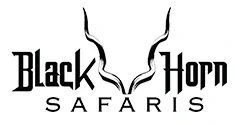
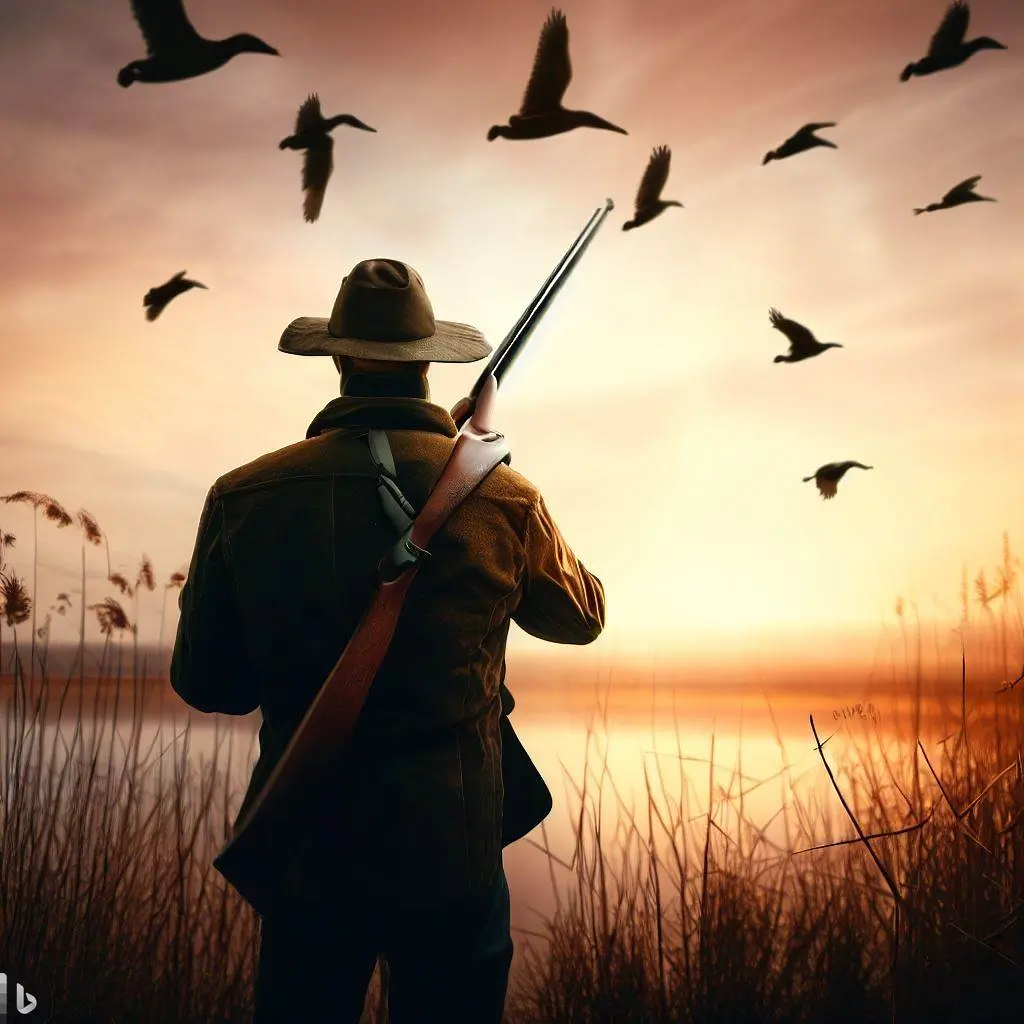
South Africa offers a vast diversity of Wing shooting – Bird hunting opportunities. There are options to suit all preferences and tastes. We offer shoot packages, see additional safari prices.
Wing Shooting Hunts, Prices, and Packages
5 Day Wing Shoot
$ 2 100
Party of 4 + Shooters $ 2 100
Party of 2 -4 Shooters $ 2 250
price is per shooter
Includes
- Accommodation, meals and soft drinks
- 3 Days Dove & Pigeon
- 2 Days Walk up Francolin & Guinea Fowl
- Return Transport to JHB International
7 Day Wing Shoot
$ 2 800
Party of 4 + Shooters $ 2 800
Party of 2 -4 Shooters $ 3 150
price is per shooter
Includes
- Accommodation, meals and soft drinks
- 4 Days Dove & Pigeon
- 3 Days Walk up Francolin & Guinea Fowl
- Return Transport to JHB International
7 Day Wing & Rifle
$ 4 500
Party of 4 + Shooters $ 4 500
Party of 2 -4 Shooters $ 4 700
price is per shooter
Includes
- Accommodation, meals and soft drinks
- 3 Days Dove & Pigeon
- 4 Days and 1 each Impala, Blesbuck & Warthog
- Return Transport to JHB International
Types of available Hunts
Species Most Commonly Hunted
South Africa offers a diverse range of bird species for hunting, each with its unique characteristics and optimal seasons. Here’s a short overview of the species available:
Sand Grouse:
Sand grouse are semi-desert birds known for their excellent camouflage and swift and variable flight. They are typically hunted from May to August. The most successful method is to set up on flight paths during their early morning and late afternoon journey to watering holes. Sand Grouse offer challenging fast shots to the waiting sportsmen. They will often come in waves where the shooting is frantic, but just as quickly it is over until the late afternoon flights. The two most commonly hunted species are Namaqua Sandgrouse and Double Banded Sandgrouse.
Quail:
Quail are small, ground-dwelling birds that prefer open grasslands and agricultural fields. They are most active in the early morning and late afternoon, making these the best times for shoots. The season for quail runs from May to September. Quail are typically hunted over pointing dogs. Quails in South Africa temporary migrants.
Francolin:
Francolin are robust birds that inhabit grasslands and bushveld areas. They are known for their loud calls and fast, low flight when flushed from cover. There are a number of different Francolin (Spurfowl) species, including Swainsons, Natal, Orange River, Cape and crested among others. The best time to hunt Francolin is during the cooler winter months of May to September. Spurfowl are most successfully hunted by walk up shooting over pointing dogs in thick cover near grain fields or marshy, vlei areas.
Guinea Fowl:
Guinea fowl are large tough, social birds than congregate in small flocks. They are known for their distinctive spotted plumage and loud, cackling calls. They are most active in the early morning and late afternoon. The season typically runs from May to September. The two most successful methods for Guinea fowl are walk up shooting when they are sitting in cover over dogs and by using beaters in a driven hunt. If driven down a hillside or over a copse of Poplar trees they can offer challenging high shots to the guns waiting below.
Doves and Pigeons:
Doves and Pigeons are a common target species for wing shooting due to their abundance and challenging flight patterns. The best shooting is around grain fields such as maize, sorgum and sunflower. Shooters are set up on flight paths into the fields and the shooting can be extremely busy. Shooters typically burn through 150 – 300 shotgun rounds in a day. They can be hunted year-round, but the best time is from March to June. The most commonly hunted species are the Rock Pigeon, Cape Turtle dove or Ring Necked Dove, Red eyed Dove and Mourning Dove.
Waterfowl
Egyptian Goose:
The Egyptian Goose is a large bodied waterfowl known for its distinctive brown and white plumage and loud honking calls. Egyptian geese can be found congregating together in small flocks during May to July each year. They prefer either fields with recently sprouted green shoots or grain fields that have already been harvested where they search for left over grain seeds. They are best hunted early in the morning on flight paths where decoys are set out. On average each gun will be able to shoot between 5 and 12 geese during a shoot. The best time to hunt these birds is during the cooler winter months from May to August. Shot size of 3 to 5 is recommended for these tough birds.
Spur-winged Goose:
The Spur-winged Goose is the largest of the African waterfowl and is known for its whistling wings and powerful flight. This large dark bird has characteristic spurs on the point of each wing, used in territorial disputes during mating season. Early mornings are most productive, with hunters normally concealed in blinds on flight paths into freshly harvested grain fields. Spur Wings are often encountered together with Egyptian Geese. The hunting season for these birds runs from May to September in the cooler months. 12 gauge shotguns with shot sizes 3 and 4 are recommended for these robust birds.
Yellow Billed Duck:
The Yellow Bill, also known as the Yellow-billed Duck, is a common waterfowl species that is known for its characteristic yellow bill and iridescent green plumage. They tend to congregate in winter on small to medium sized water impoundments. Yellow billed Ducks are mainly nocturnal feeders and prefer newly harvested grain fields or fields with freshly emerged green shoots. Either early morning shoots when the ducks return to the dams, or afternoon shoots when they fly out to feed will bring the best results. The best time to hunt these birds is during the cooler months from May to August.
White-faced Whistling Duck:
These ducks have a distinctive white face, in Afrikaans they are called “Nonnetjies eende” because they look like nuns with their habits, and high-pitched whistling calls. These ducks are most active at night, making dawn and dusk the best times for shoots. The hunting season for White faced Ducks is typically runs from May to September.
African Shell Duck:
The African Shell Duck, also known as the South African Shelduck, is a large, chestnut colored waterfowl with a grey head. They prefer shallow pans, dams and vleis where they congregate. Morning hunts over recently harvested grain fields and afternoon shoots on incoming flight paths to the water impoundments are most successful for these ducks. The best time to hunt these birds is during the cooler months of May to August.
Teal:
Most commonly hunted are the Red Billed Teal and the Cape Teal. Teal are smaller ducks that are known for their fast, erratic flight. Teal are most commonly found in small water impoundments that have abundant emergent water grass. Morning and evening hunts are most productive
Each of these game bird species presents a unique challenge and rewards the practiced shot, offering diverse and exciting sport. The hunting seasons are regulated to ensure the sustainability of bird populations, and hunters need to follow ethical hunting practices. With its rich diversity of bird species, South Africa offers a premier wing shooting experience for all skill levels of bird hunters.
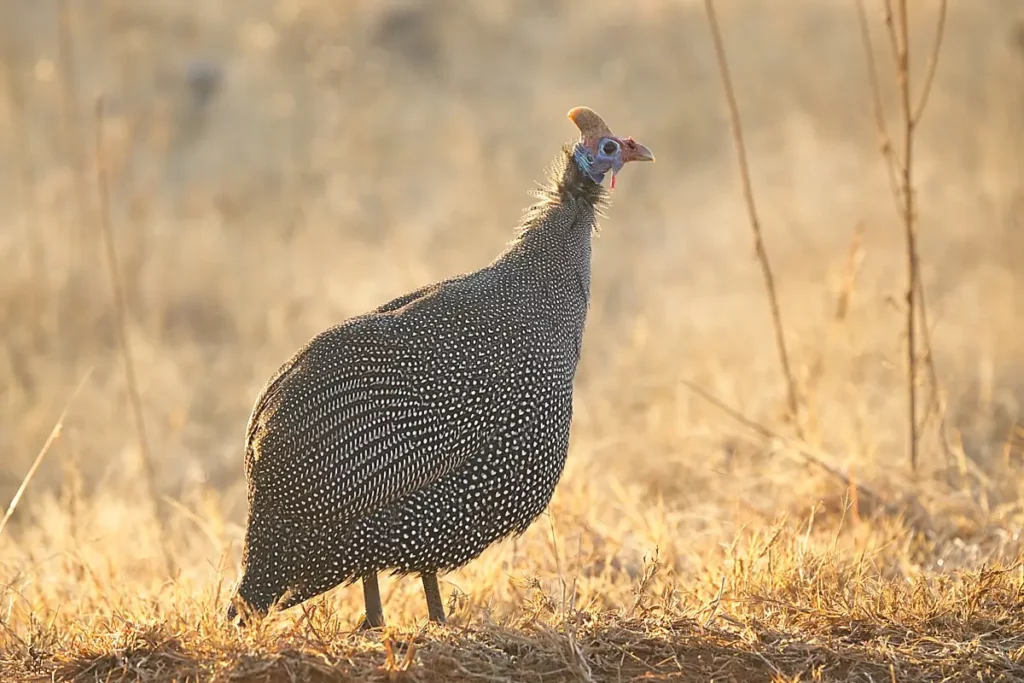
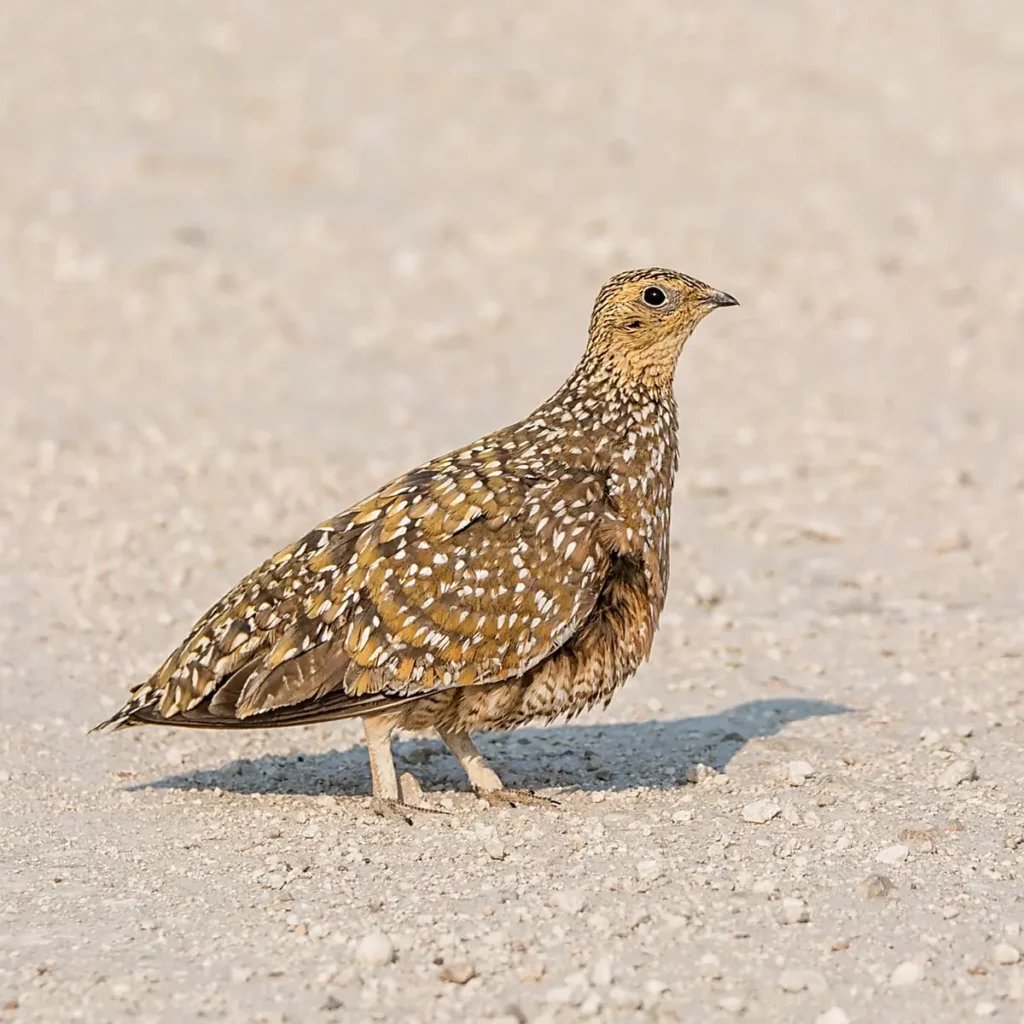
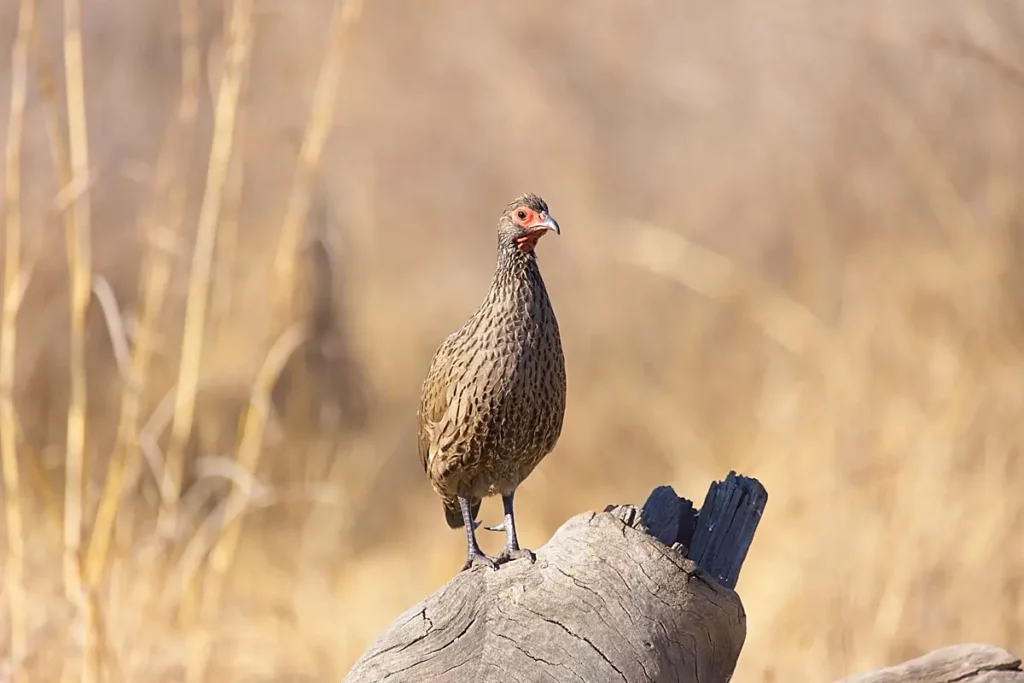
Bird Hunting Techniques & Methods
There are several techniques used in wing shooting, each with its own unique character and demands.
One of the most common techniques is over pointer dogs. This method involves using dogs, such as English pointers, German Shorthaired Pointers, and Weimaraner’s, to locate, hold and flush out game birds. The dogs are trained to point and hold their position when they locate a bird in cover, allowing the hunter to approach and flush the bird into flight to provide a shot opportunity.
Another technique is walk-up rough shooting, where hunters walk through the terrain, flushing out game birds as they go. This method requires a keen eye and quick reflexes as birds can be flushed out unexpectedly and shot opportunities are fleeting.
Hunting on flight paths is another technique used. This involves positioning oneself along the flight paths of birds, usually on their way to, or returning from feeding places. This requires a good understanding of bird behavior and flight patterns.
Over-under and side-by-side shotguns are popular choices, with 12 gauge and 20 bore being common sizes. The choice between over-under and side-by-side is largely a matter of personal preference, with some shots preferring the balance and sight picture of over-under shotguns, while others prefer the traditional feel and balance of side-by-side shotguns.
Walk up Rough Shooting
Walk up shooting is mainly conducted over pointing and flushing dogs where a small stretch of grassland is chosen. The shooters then walk through the area. The dogs are controlled by their respective dog handlers. When a dog goes on point the guns move into position. The dogs are given the command to flush the birds. If a bird is brought down the dogs will retrieve the bird and deliver it to the hand of the dog handler.
Walk up shooting often entails a fair amount of walking and many miles can be covered during a hunting day. After each beat the wing shooters will come together and discuss the beat.
Safety is of paramount importance. The professional hunter will make sure that none of the shooters move out of position and endanger themselves or the other shooters.
This is the best method for Francolin, Spurfowl and Guinea fowl. Walk up rough shooting is one of the most enjoyable forms. Shots are often unexpected and require skill to be successful.

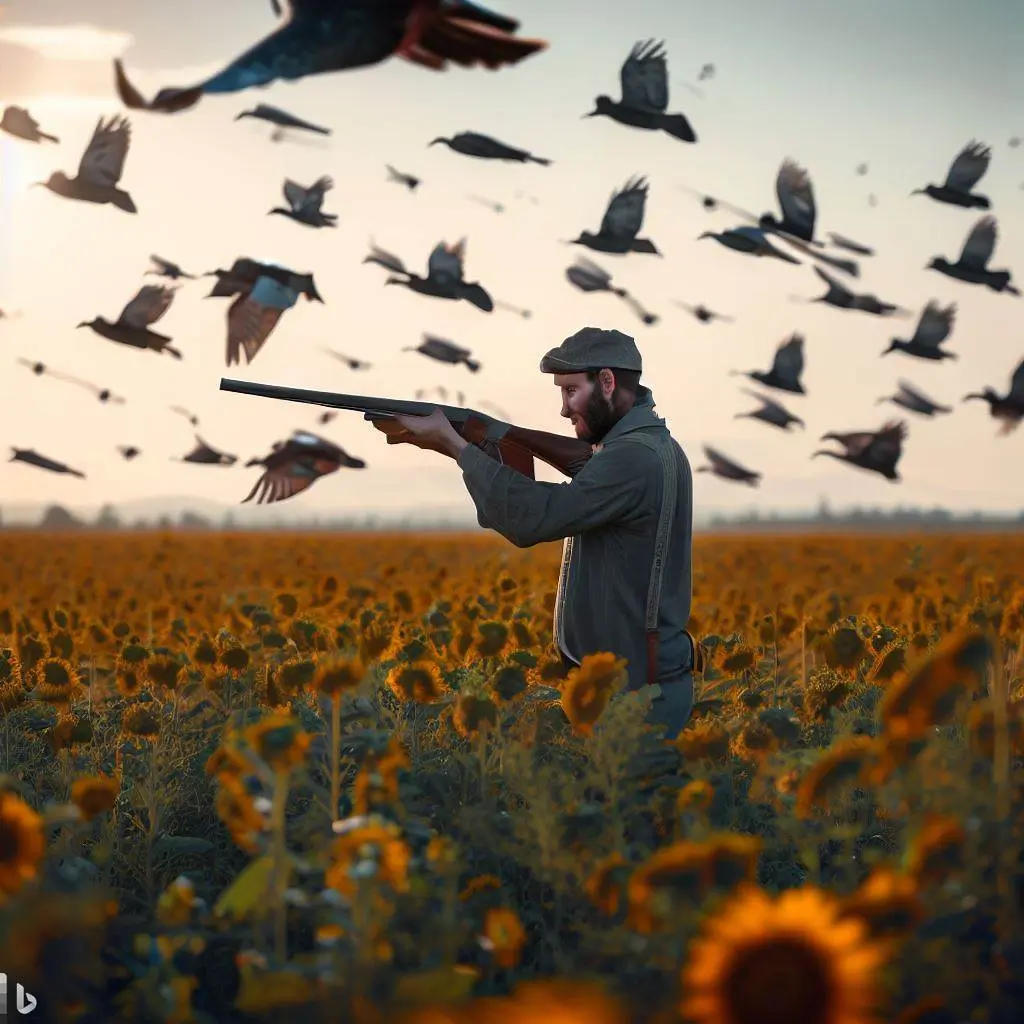
Pigeon and Doves on flight paths
Pigeons, doves and sand grouse can be shot when they fly between feeding or drinking places and where they roost. A well used flight path can provide for some exciting shooting.
Shooters will be placed out in a line. Each shooter will be given a direction and shooting arch to cover. All birds that are within the shooters field of fire can be safely shot.
Birds are only recovered at the end of the shoot.
This is one of the best methods for Sand grouse, Rock Pigeons and Doves.
Pigeon and Dove over grain fields
One of the most successful and enjoyable methods for Pigeons and Doves is over grain fields. The guns are placed out around the field in such a way that they do not endanger any of the other shooters. Birds are shot as they approach the field. If the guns are placed correctly the birds can be Kept circling the field for quite some time.
On a good day each gun will get 500 plus, challenging shot opportunities.
This is one of the best wing shooting methods for shooting Rock Pigeons and Doves.
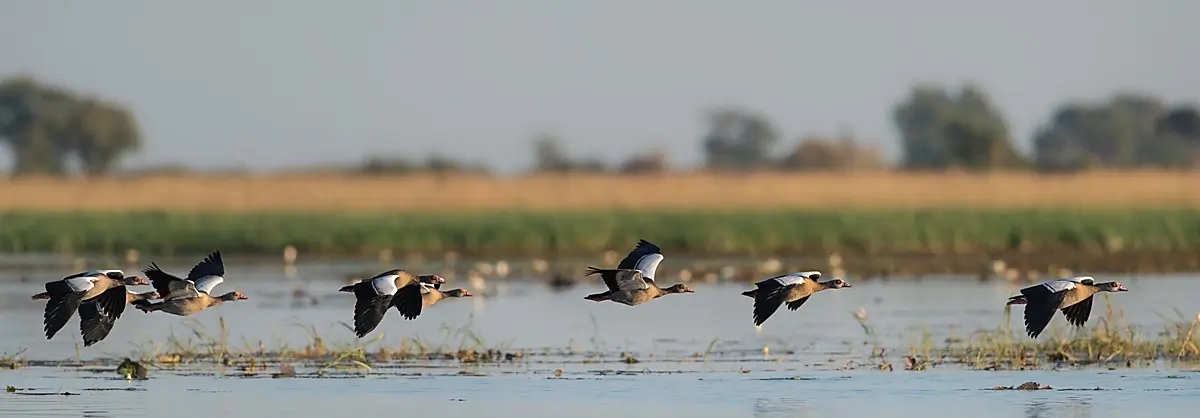
Waterfowl
Most waterfowl shooting is conducted in the early morning as the sun rises or late afternoon as the sun sets. Shooters are strategically placed around a still water. Ducks and geese are shot as they leave for their feeding areas or return to roost for the night.
Generally the birds will depart and return from a given direction. Shooters will be placed in such a way that they can effectively cover the area from which the birds are expected to appear.
Dogs are again used to retrieve downed birds that fall into the water.
Guns For Birds
Generally we recommend that shooters use 12 ga shotguns, ladies might prefer the reduced recoil of a 20 ga.
*** Please note that only double barreled, and pump action guns are allowed. You will not be able to bring a semi-automatic shotgun into South Africa.***
Recommended Shot Size
Doves, Pigeons and Sand Grouse – Shot No. 7
Francolin, Spurfowl and Guinea fowl – Shot No. 6-7
Waterfowl – Shot No. 3-4
A typical day
Your normal wing shooting day will look something like this. Early morning wake up and have breakfast. We will then leave the lodge heading to our concession which might be a 20 minute drive from the lodge. On arrival at the concession there will be a briefing on the days shoot. Guns will then be placed out into their shooting positions. After an enjoyable mornings shoot, we will all gather for lunch and refreshments.
After lunch we may move to a different shooting area or change tactics. An enjoyable afternoon will be spent shooting indigenous South African birds.
As darkness falls we will return to the lodge for a great evening meal and a few sundowners. After which we turn in for the night to nurse our bruised shoulders.
The next day we will return to do it all again.
Group Sizes
Wing shooting is very much a social pastime. We can accommodate group sizes of between four and twelve wing shooters. All groups will be guided by one or more Professional Hunters.
South Africa – History and Popularity of Bird Safaris
South Africa has a rich history that dates back to the 1820 settlers, who hunted birds for sustenance. Over time, this evolved into a sport. The British influence during the colonial era introduced the tradition of driven shoots, which became a popular social events among the society elites. These historical roots have shaped the sport of shooting in South Africa, enhancing traditional methods with modern day conservation efforts.
In the 20th century, the development of more sophisticated shotguns and the entrenchment of regulations further refined the sport. The introduction of bag limits and hunting seasons ensured the sustainability of bird populations, while the emergence of professional outfitters and hunting safaris made the sport more accessible to traveling sportsmen. These changes have helped to preserve the tradition of local wing shooting, while also adapting it to modern sensibilities and ecological management.
Bird shooting is more popular than ever in Africa, attracting both local and international participants. South Africa’s diverse bird species and stunning landscapes make it a premium destination for wing shooting and plains game safaris.
The sport has evolved to include a variety of methods, such as walk-up shooting, driven shoots, and flight path shooting catering to differing preferences.
FAQs Frequently Asked Questions
What guns are best for Africa?
The most commonly used and recommended shotguns for South African conditions are the 12 gauge for its versatility. The 12 Gauge shotgun in either over and under or side by side configuration will allow you to hunt all commonly available game bird species. 12 Gauge ammunition is also freely available and prices are reasonable.
When is the best time to book a wing shooting safari?
The best times to book a wing shoot are during the cooler winter months from May to August. During winter the hunting season is open for all game birds and they are commonly most active for a longer period during the day. Breeding season takes place in the summer months between October and January, when the season is closed to hunting.
How many shot opportunities can I expect in a day on a wing shoot?
Shot opportunities will vary depending on what type of wing shooting you are participating in. Doves and Pigeons will normally have the most shot opportunities which will generally be between 100 – 300 shots at birds. Walk up shooting for Francolin, Quail and Guinea Fowl will on average provide between 20 and 40 opportunities per day. A day of Waterfowl shooting will normally provide between 20 and 50 shots at birds.
Am I able to hire a shotgun and ammunition for a shoot?
Most outfitters specializing in wing shooting will have shotguns available for hire. They are also able to provide ammunition, normally 12 gauge, in the various shot sizes appropriate for type of game birds you will be hunting.
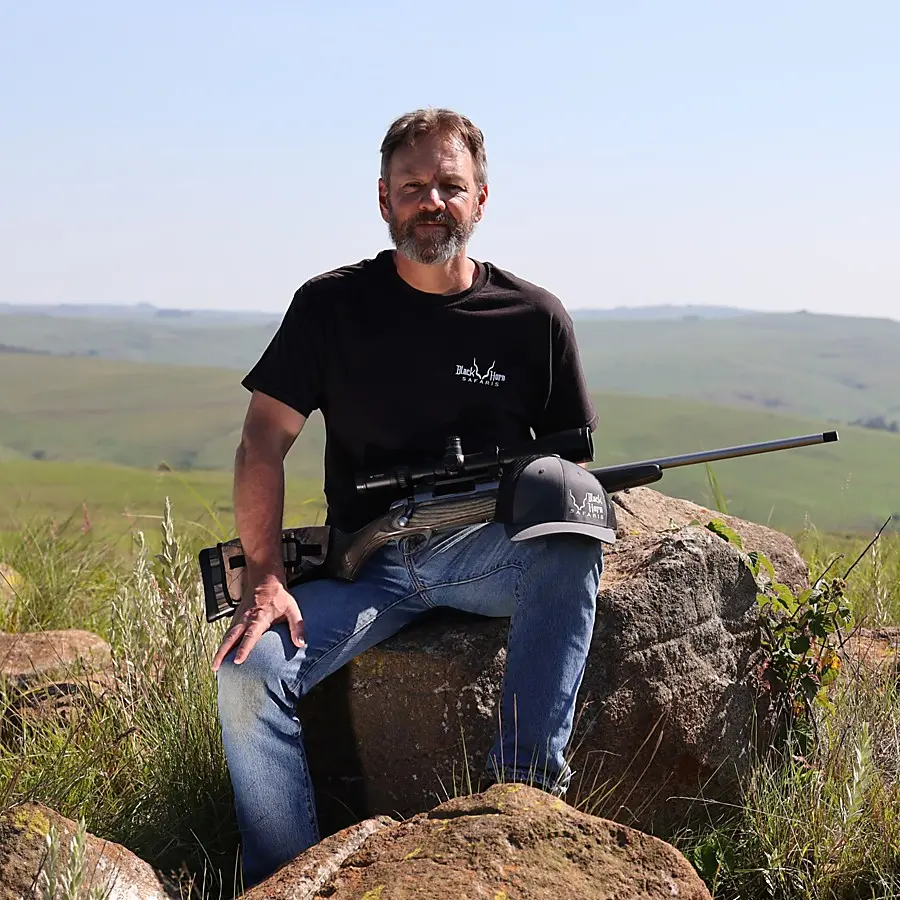
Adrian Anderson first obtained his Professional Hunters license in 1991. He is a Big Five and Dangerous Game licensed Professional Hunter and Hunting Outfitter. He has a tremendous love for wildlife and the African bush and enjoys sharing his knowledge with the hunting clients that he guides. Guiding hunters in Africa’s wild places is a passion and seeing them succeed with their goals brings satisfaction. With knowledge of the Safari industry built up over 32 years he is well qualified to give guidance to his hunting clients.
